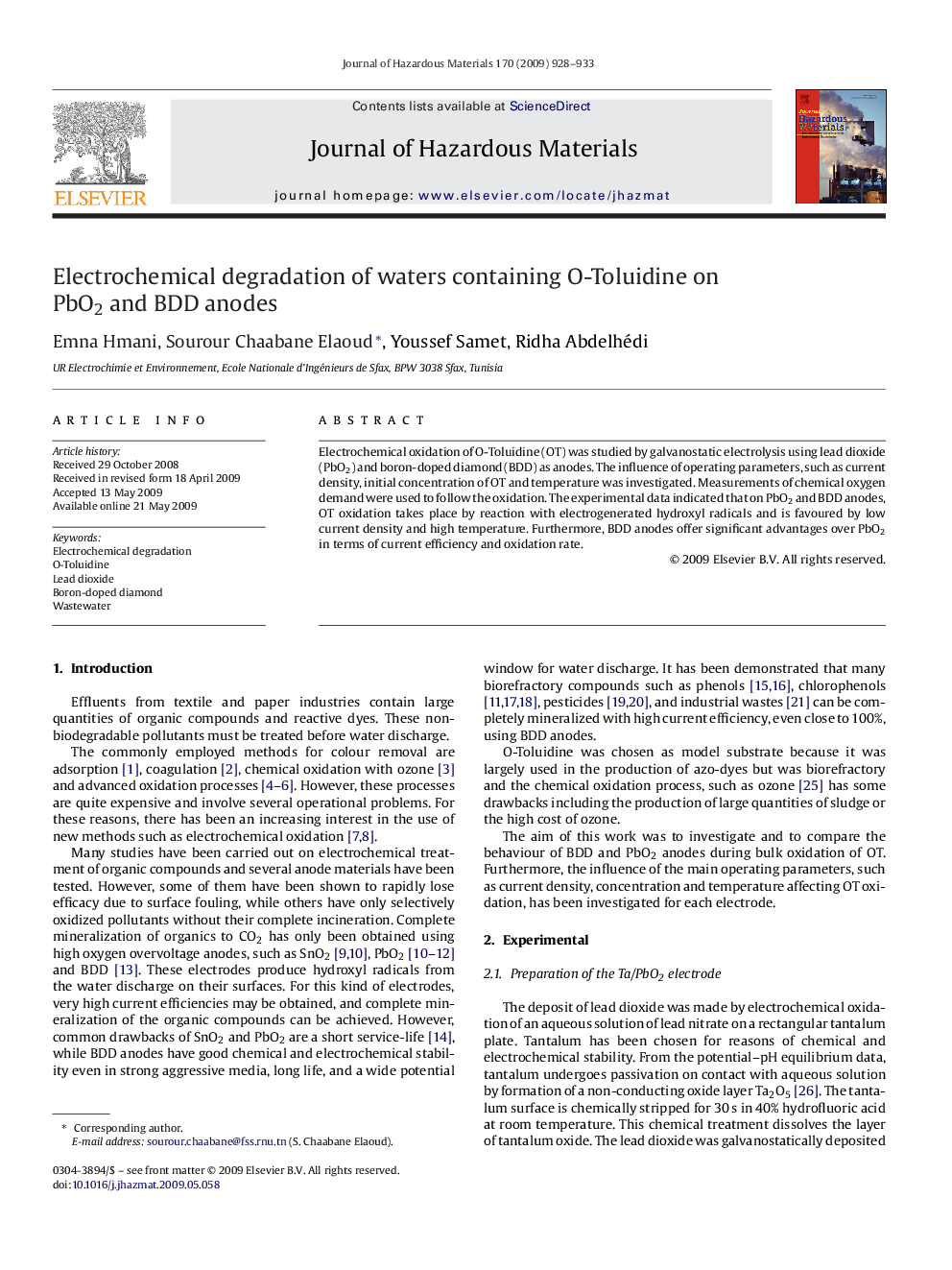| Article ID | Journal | Published Year | Pages | File Type |
|---|---|---|---|---|
| 581255 | Journal of Hazardous Materials | 2009 | 6 Pages |
Abstract
Electrochemical oxidation of O-Toluidine (OT) was studied by galvanostatic electrolysis using lead dioxide (PbO2) and boron-doped diamond (BDD) as anodes. The influence of operating parameters, such as current density, initial concentration of OT and temperature was investigated. Measurements of chemical oxygen demand were used to follow the oxidation. The experimental data indicated that on PbO2 and BDD anodes, OT oxidation takes place by reaction with electrogenerated hydroxyl radicals and is favoured by low current density and high temperature. Furthermore, BDD anodes offer significant advantages over PbO2 in terms of current efficiency and oxidation rate.
Related Topics
Physical Sciences and Engineering
Chemical Engineering
Chemical Health and Safety
Authors
Emna Hmani, Sourour Chaabane Elaoud, Youssef Samet, Ridha Abdelhédi,
